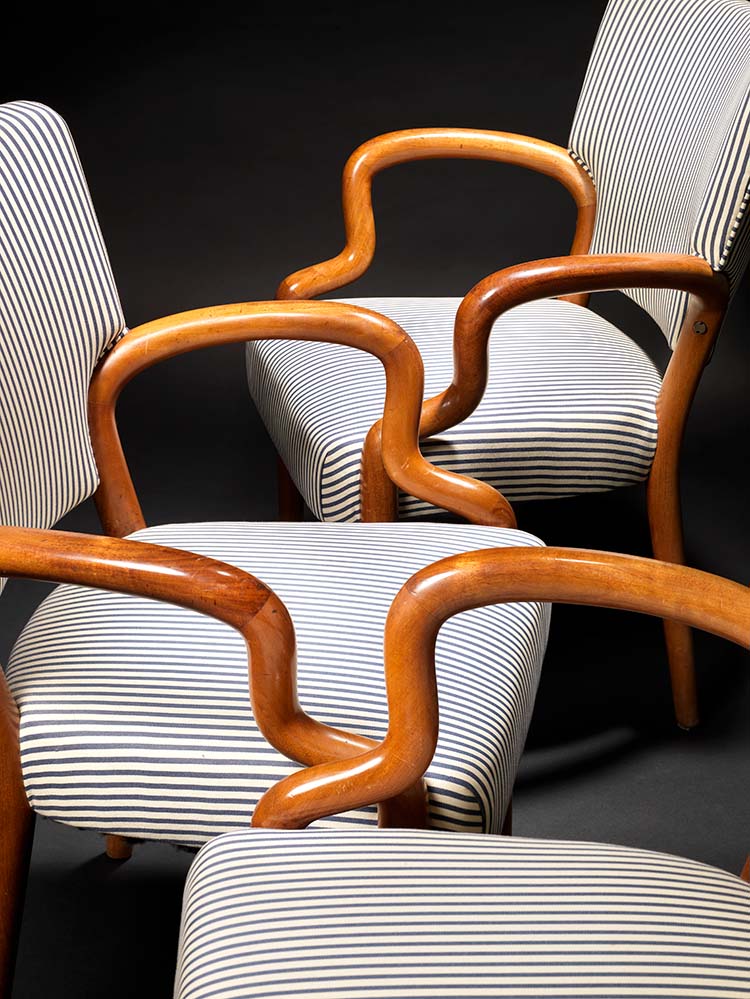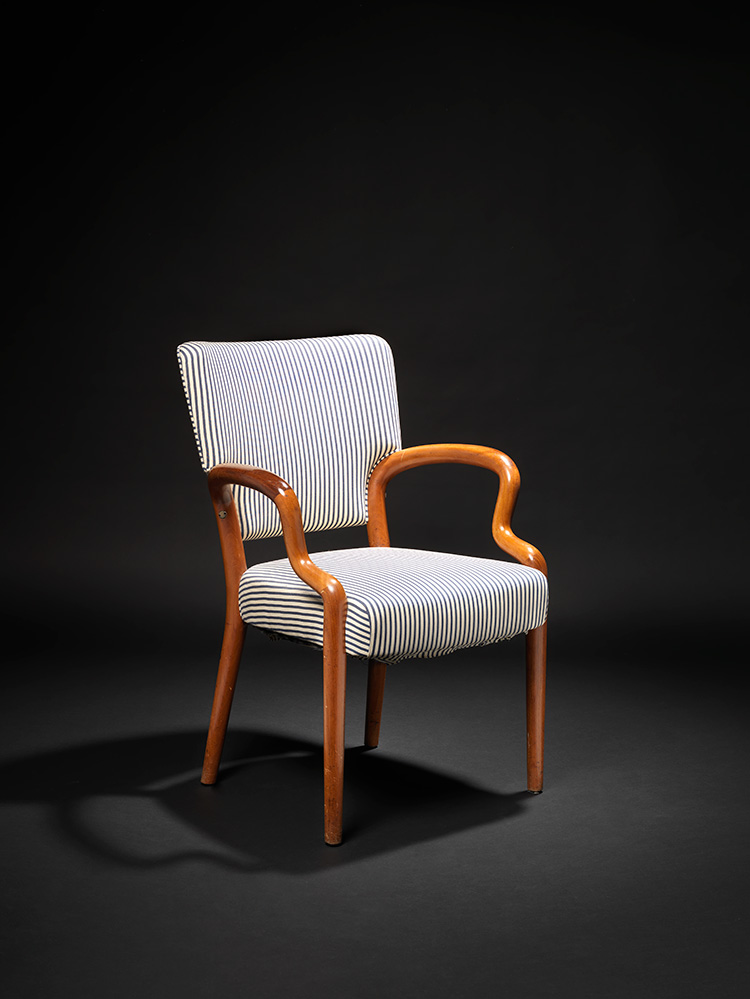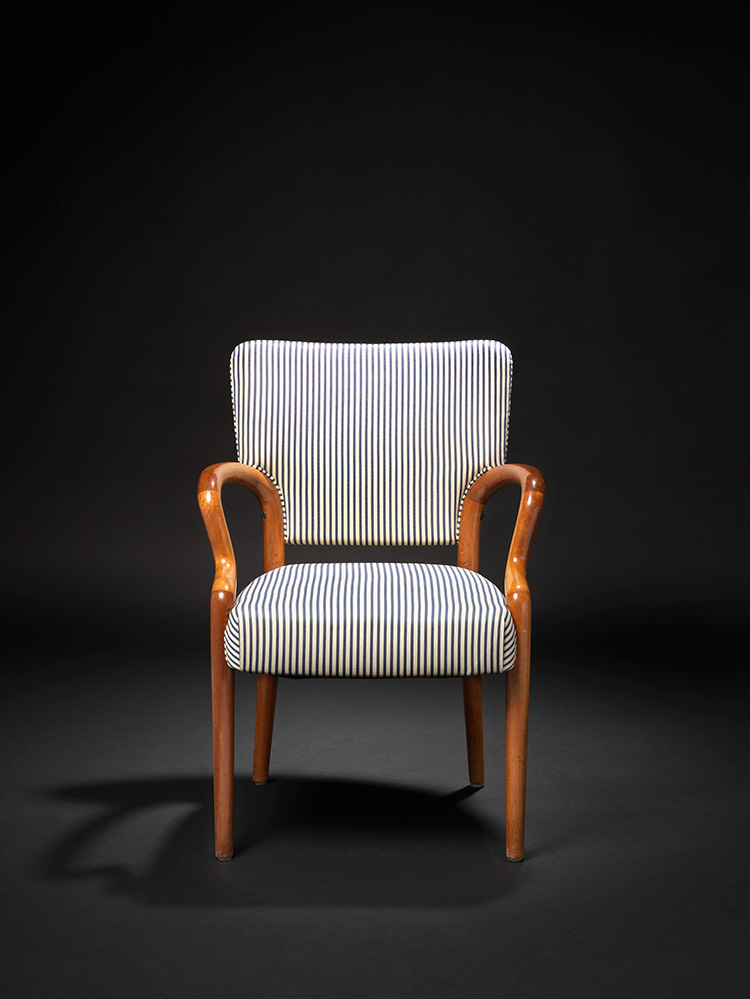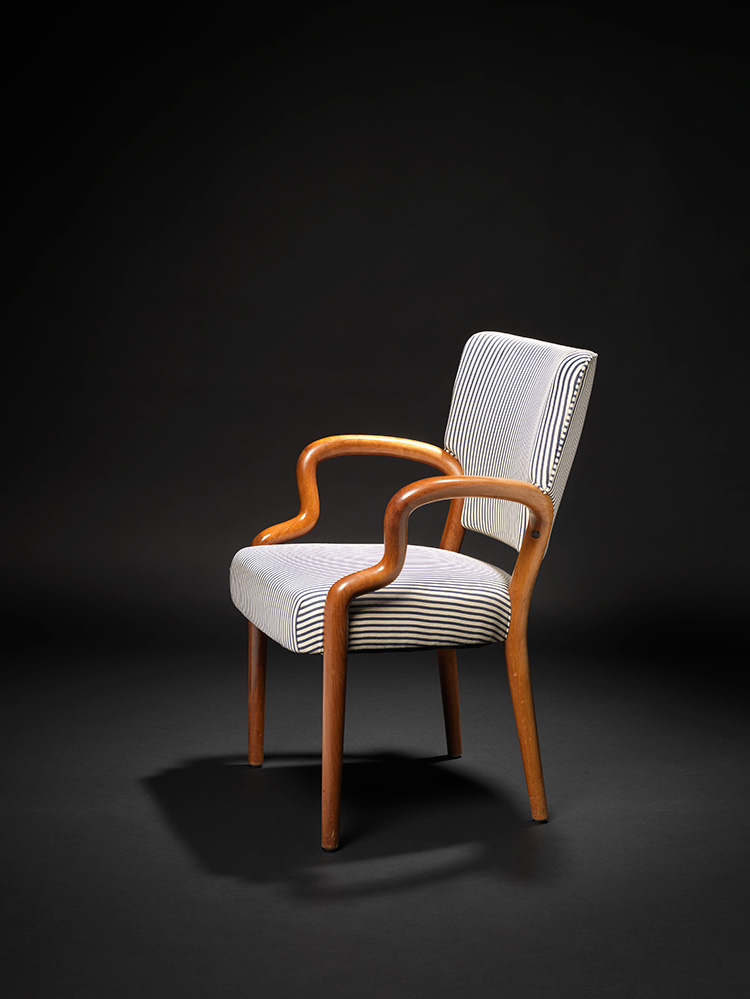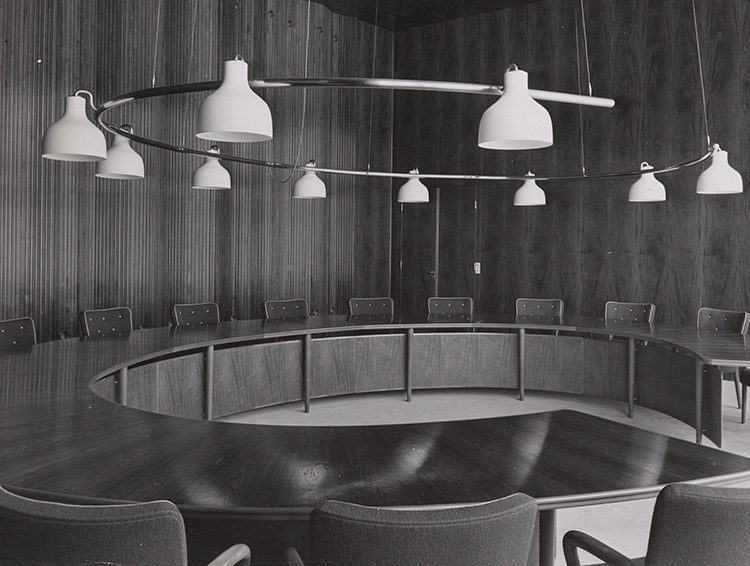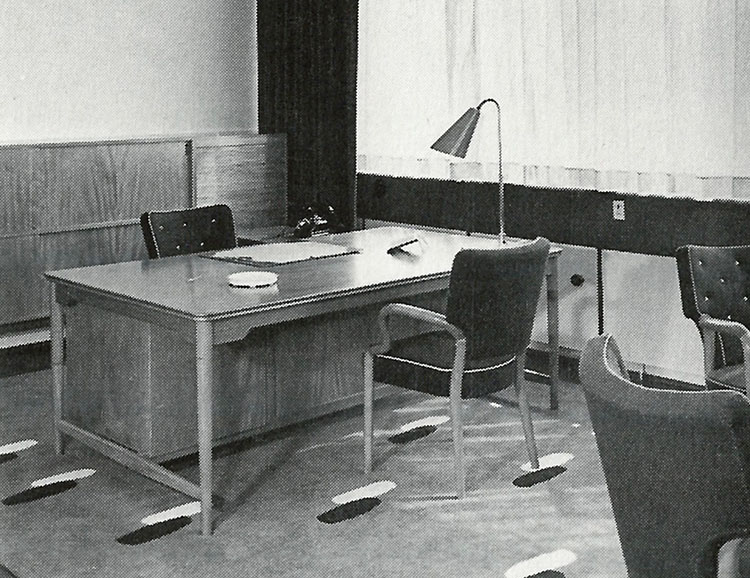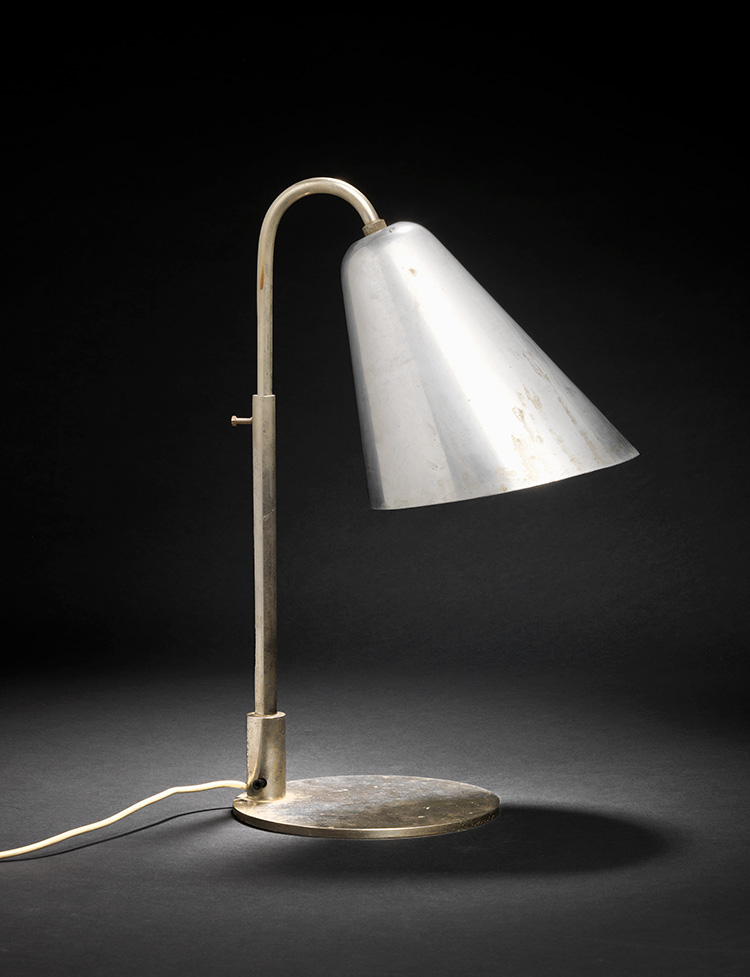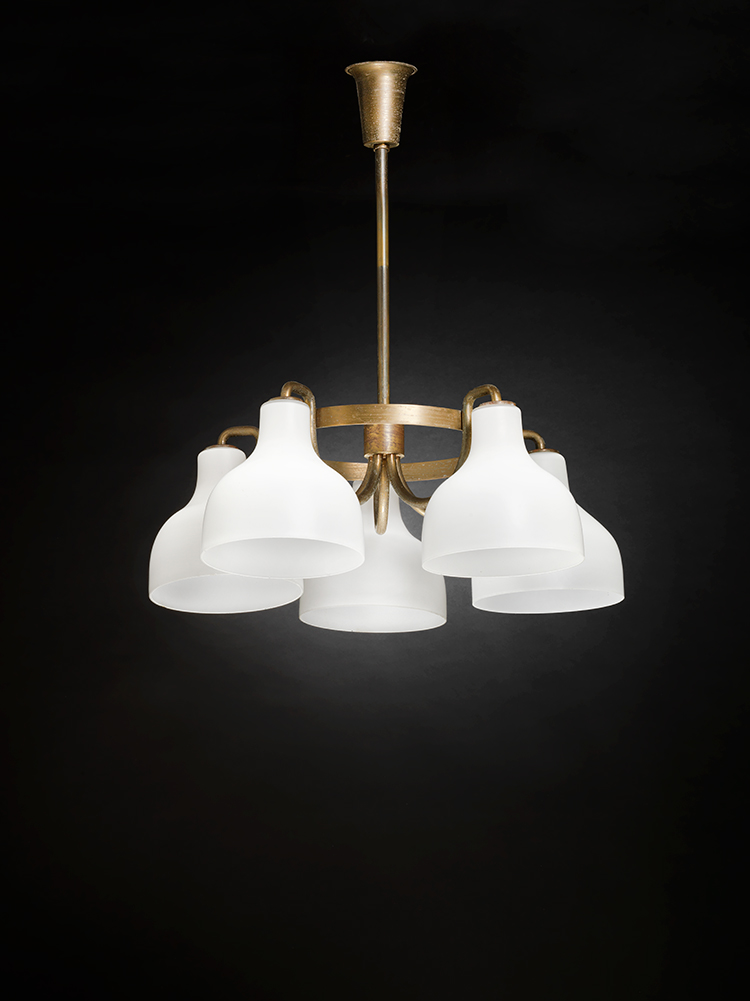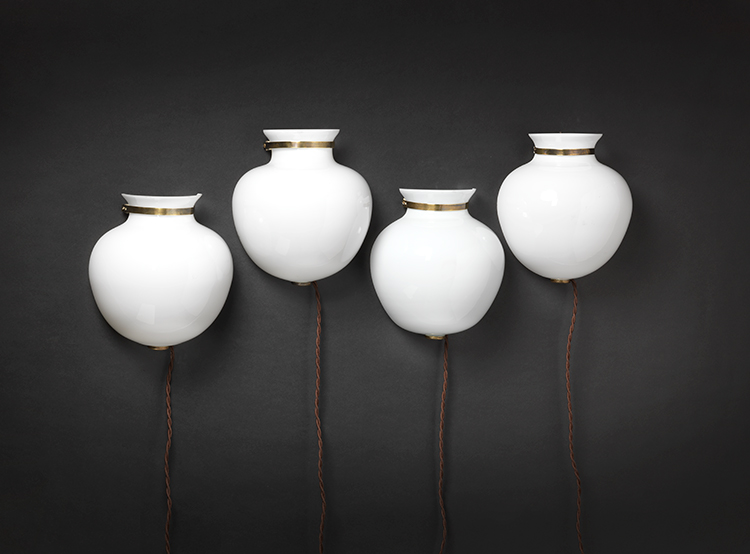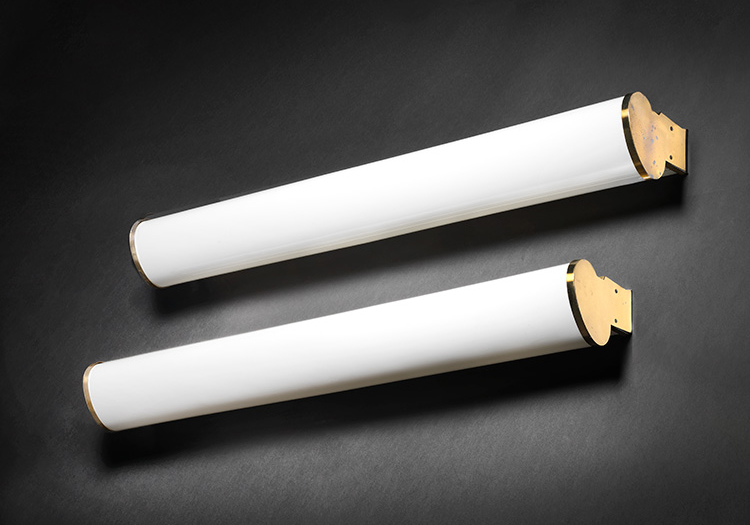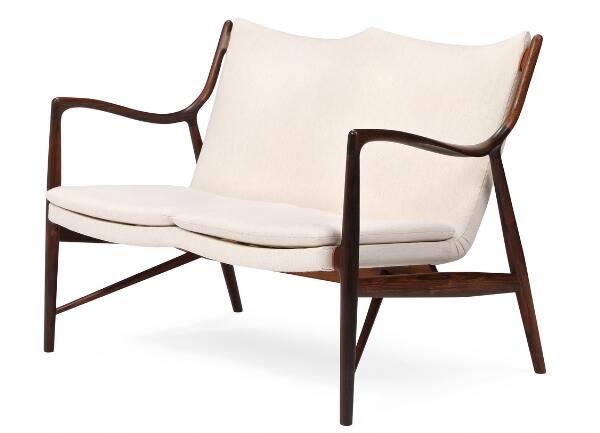Items for sale
Vilhelm Lauritzen
-
 2448/737Lyngby
2448/737LyngbyVilhelm Lauritzen: “Christiansborg”. A brass chandelier with five sockets. Frosted opaline glass shades. Manufactured by Louis Poulsen. Diam. 65 cm.
Selling
Estimate :
12,000–15,000 DKK Next bid:
-
 924/875Bredgade
924/875BredgadeVilhelm Lauritzen: "Half-vase Lamp". Set of four wall lamps with vase-shaped opal glass shades. (4)
Selling
Estimate :
20,000 DKK -
 924/876Bredgade
924/876BredgadeVilhelm Lauritzen: Rare, sculptural Cuban mahogany armchair with brass fittings. Upholstered with striped wool.
Selling
Estimate :
60,000–80,000 DKK -
 924/877Lyngby
924/877LyngbyVilhelm Lauritzen, Frits Schlegel: Rare patinated nickel plated metal table lamp with conical shade.
Selling
Estimate :
50,000–75,000 DKK
Finn Juhl
-
 2447/666Lyngby
2447/666LyngbyFinn Juhl: A grey and white lacquered steel and aluminium wall lamp. Manufactured by OneCollection. L. 25. Diam. 17.2 cm.
Selling
Estimate :
3,000–4,000 DKK Next bid: Your bid:
-
 2447/870Aarhus
2447/870AarhusFinn Juhl: Chair with black lacquered oak frame, upholstered with greyish fabric. Model 108. Designed 1946. Manufactured by House of Finn Juhl.
Selling
Estimate :
4,000 DKK Next bid: Your bid:
-
 2448/578Aarhus
2448/578AarhusFinn Juhl: "Diplomat". Six armchairs with rosewood frames. Seats and backs upholstered with light leather. (6)
Selling
Estimate :
15,000–20,000 DKK Next bid:
-
 924/821Lyngby
924/821LyngbyFinn Juhl: “FJ 45”. A teak easy chair. Upholstered with patinated brown leather.
Selling
Estimate :
60,000–80,000 DKK
Flemming Lassen
-
 924/938Lyngby
924/938LyngbyFlemming Lassen, attributed: Freestanding three seater sofa with round mahogany legs. Upholstered with original green wool.
Selling
Estimate :
50,000–75,000 DKK -
 924/939Lyngby
924/939LyngbyFlemming Lassen: Wingback easy chair with round, Cuban mahogany legs. Upholstered with green wool.
Selling
Estimate :
150,000–200,000 DKK
Poul Henningsen
-
 2447/555Lyngby
2447/555LyngbyPoul Henningsen: “PH Four-Shade Lamp”. "PH-4/4½/4". Browned brass bayonet socket house, frame and canopy. Yellow painted frosted glass shades.
Selling
Estimate :
30,000–40,000 DKK Next bid:
-
 2447/569Aarhus
2447/569AarhusPoul Henningsen: "PH 4/3". Table lamp in burnished brass. Louis Poulsen. Circa 1930. H. 54.
Selling
Estimate :
25,000–30,000 DKK Next bid:
-
 2447/712Aarhus
2447/712AarhusPoul Henningsen: “PH-4.5/3”. A patinated copper outdoor wall lamp. Manufactured by Louis Poulsen. Diam. 45 cm.
Selling
Estimate :
4,000 DKK Next bid: Your bid:
-
 2447/756Aarhus
2447/756AarhusPoul Henningsen: "PH 2/1 kiplampe". Chromed metal table lamp with multi layer opal glass shades. H. 21-36 cm.
Selling
Estimate :
5,000 DKK Next bid: Your bid:

